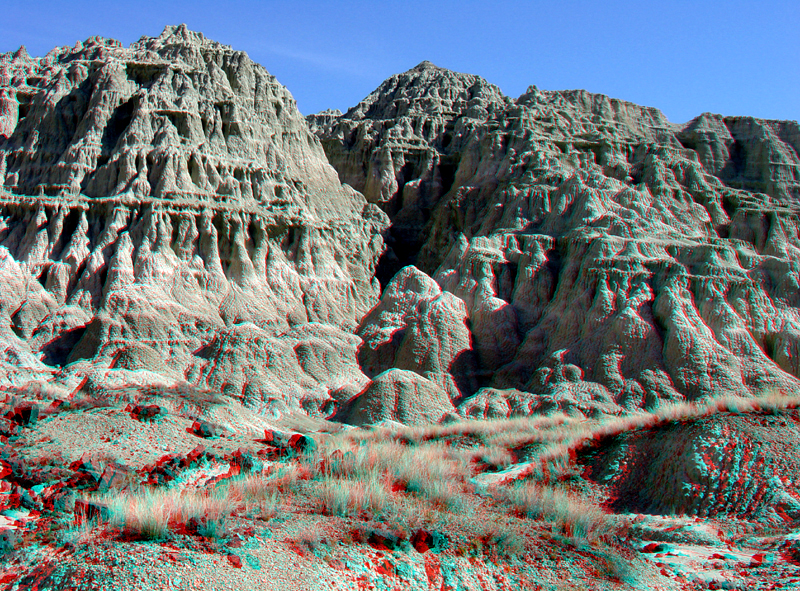| The badlands at Blue Basin and the surrounding valley to the
north (Turtle Cove) have yielded many of the most important fossils recovered
in the John Day region. These fossil discoveries helped establish much of
the chronology of North American Tertiary-age mammalian faunas. Today the
region continues to not only yield new fossil plants and
animals, but is also providing a wealth of knowledge about past climate
history and environmental changes associated with the development of the
the ancestral Cascades and Oregon's Coast Ranges, and episodes of widespread catastrophic
volcanism in the Columbia Plateau region (Morris, 2003).
Many of the early fossils were collected as "float" from landslide
and alluvial deposits (such as the deposits shown in the foreground of
this image). However, paleontological studies conducted today require
the more arduous task of studying fossils found in place. Fossils found
this way are typically rare and are often difficult to get to, but their scientific value is
much greater.
|
